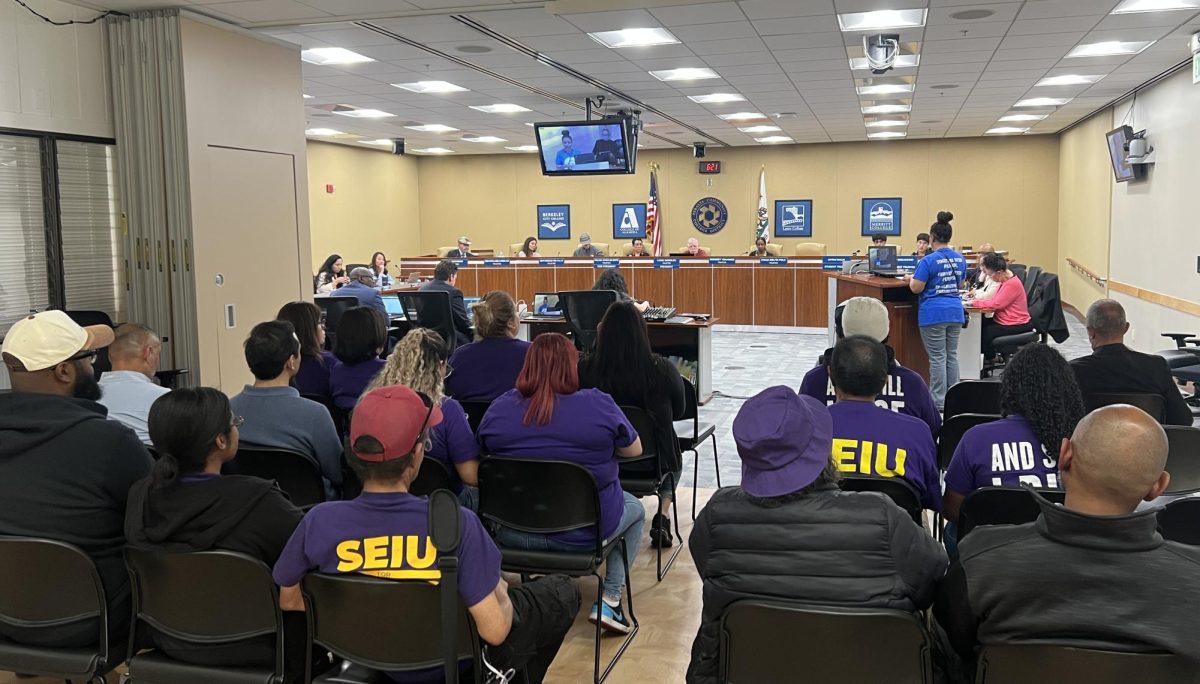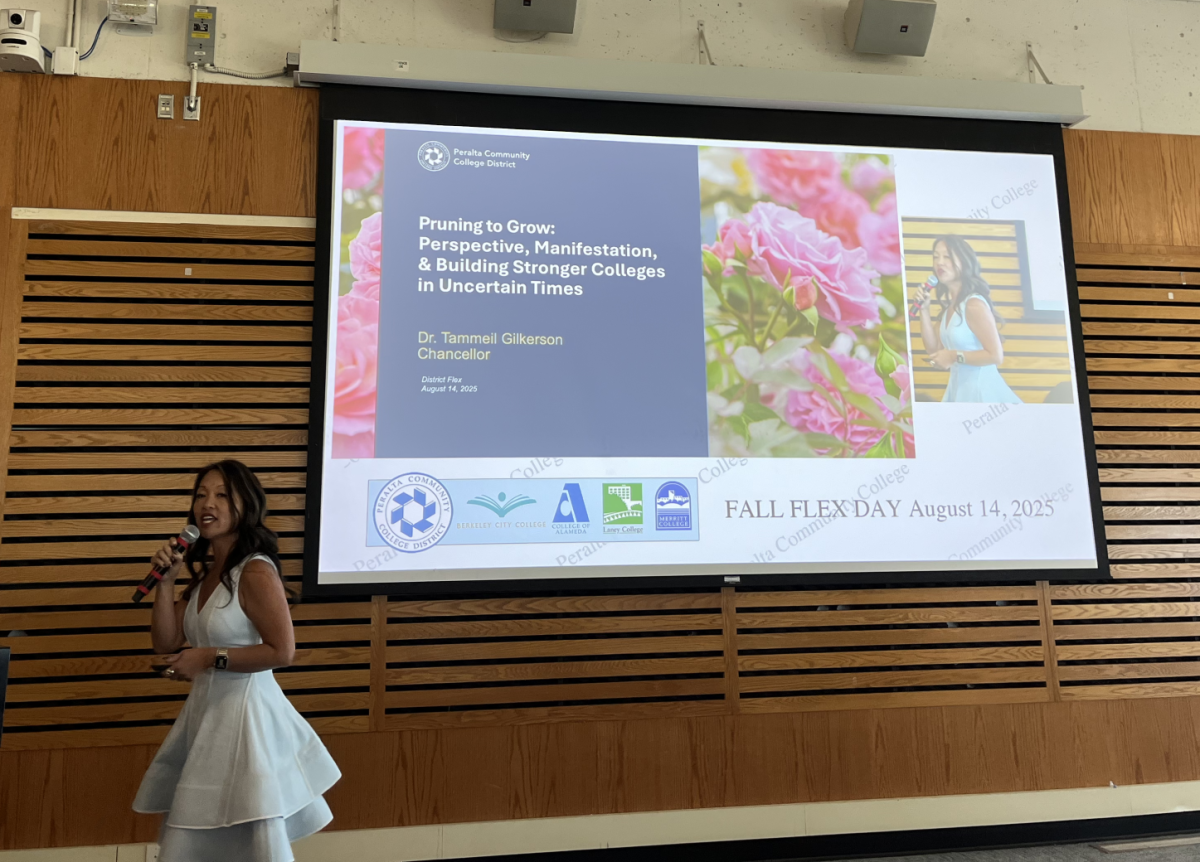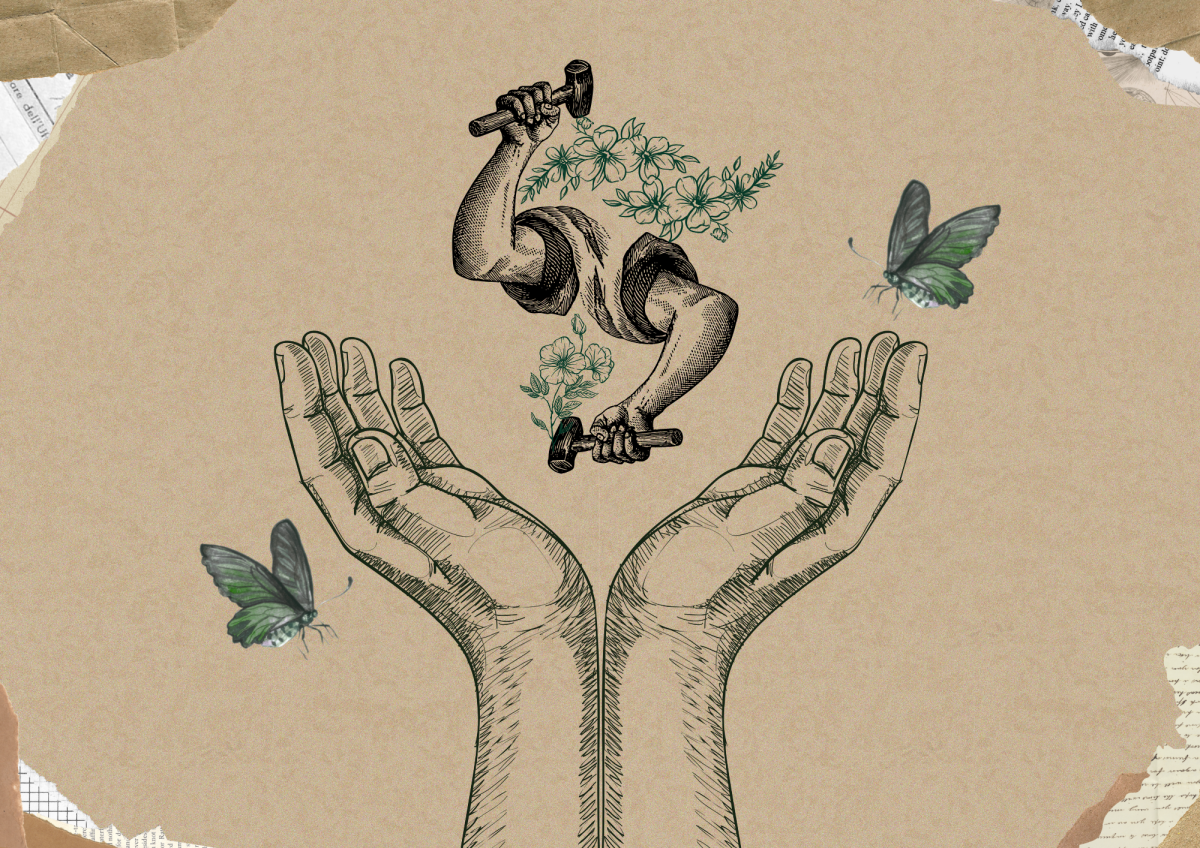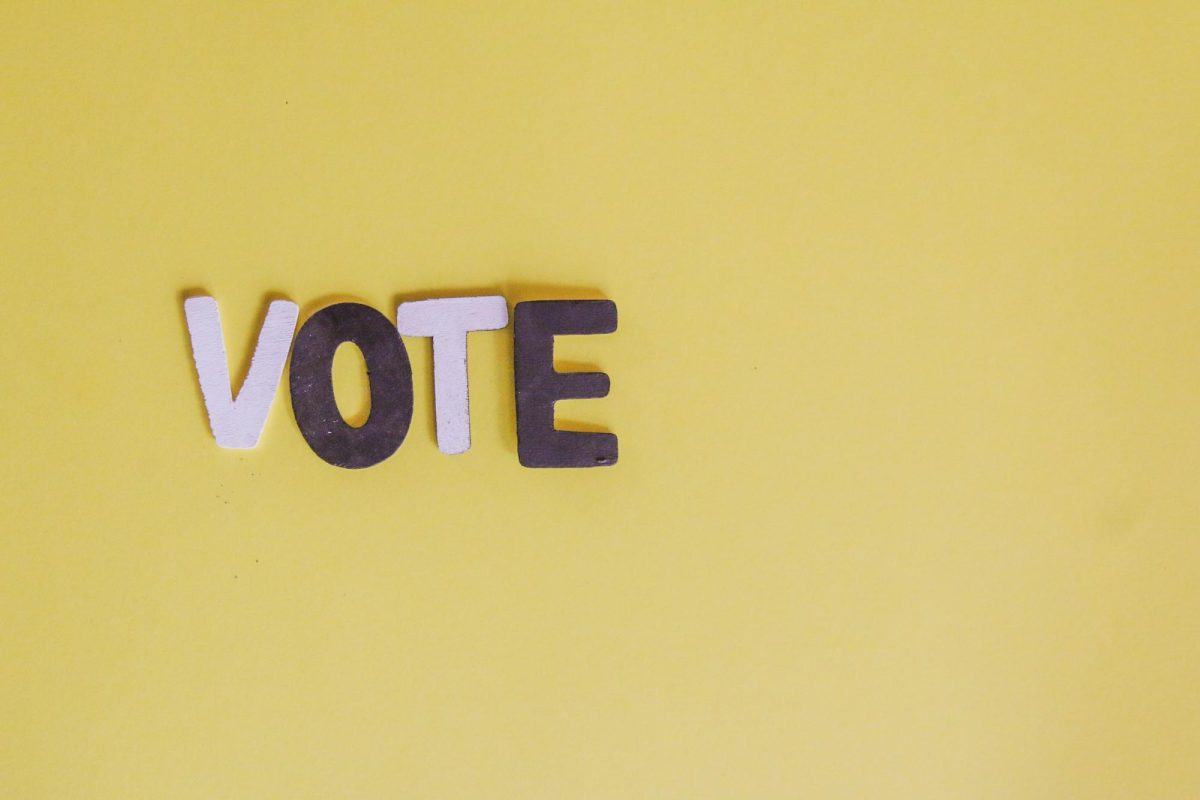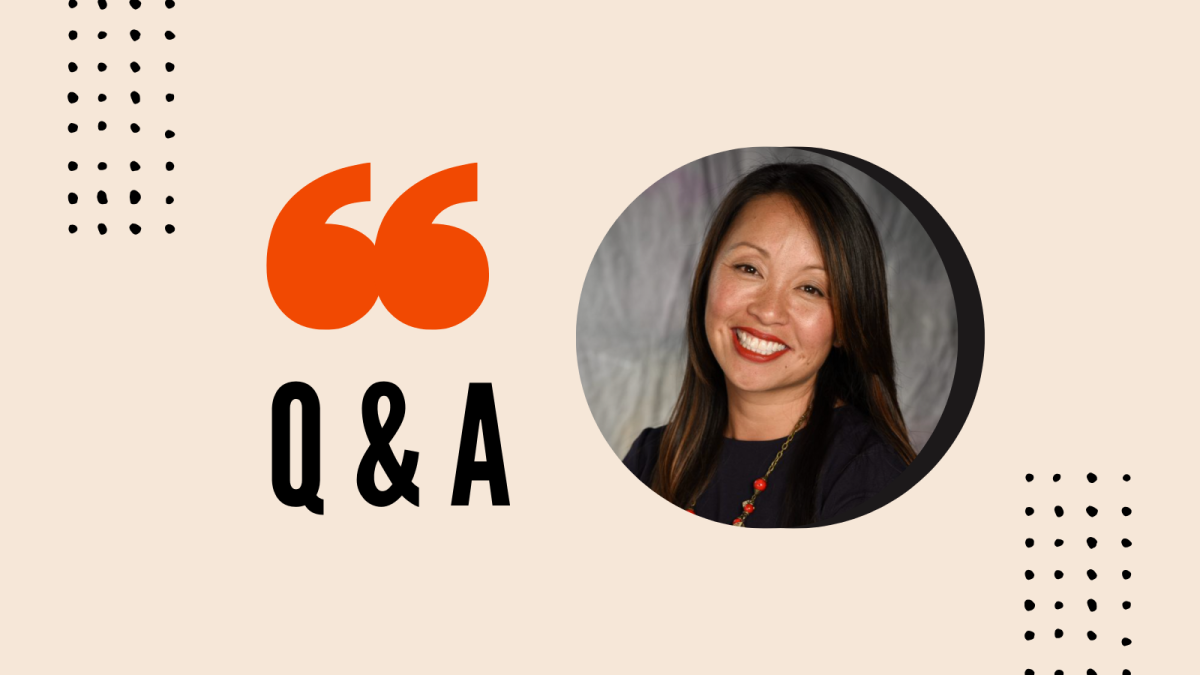Peralta Community College District’s incoming chancellor, Tammeil Gilkerson, is set to begin her term on Jan. 4 of next year. Gilkerson – the district’s first permanent chancellor in over three years – wants to be “here for the rest of my career” and has high hopes for changing “what the narrative has been about Peralta, frankly.”
In a Nov. 13 interview with The Citizen, Gilkerson discussed her background and plans for leading the district. We asked her about her life, career, and how she plans to tackle hot topics within the district. To inform our questions, we reached out to representatives from various constituency groups, such as student government leaders, faculty and classified staff leaders, as well as regular Peralta students, to find out what issues they want to see the next chancellor address.
This conversation has been edited for brevity and clarity. Watch the full video interview on Youtube.
Introduction
A: My role as the Chancellor is to serve as the single employee for the Board of Trustees. My role is to implement the policy and the direction set by the Board of Trustees and to provide support to the colleges so that they can actualize the missions and visions of each institution, and support, ultimately, student success. And so, that goal really is to coordinate in and amongst the institutions, so that we can be working in one accord towards those goals. I kind of serve as the conduit between the two, helping explain and communicate up to the Board of Trustees, who actually supports and represents the community voices, what the community has done for them as elected officials and helping them actually understand what's happening at the colleges and on the ground with students, so that it helps inform their decision-making in terms of policy direction for the district.
A: There’s so many. [pause] One of the role models that I would elevate is a student. His name is Terrence Williams. I had the honor of learning about his life experience when I was the President of Laney. He was the Associated Student Government President, did work, and really struggled with basic needs insecurities. Was homeless, was housing insecure, had lost his family, was really on his own. Part of why I say he's a role model for me is because he taught me that through the most dire circumstances that you can find joy. [...] He helped me understand the lived experience of students so that I could be a better advocate.
A: Yeah, so I'm one of seven children. I was adopted from Korea. I was abandoned, I lived in an orphanage when I was little and in a foster home, and then I was couriered on an airplane here to the United States when I was about 2 years old, so I don't have a real birthday.
My parents are both white, and they had two older children, my brothers. [...] My dad served in the military, and they saw a bunch of abandoned children when he was stationed in Taiwan, and my mother was with him. They were high school sweethearts. They knew that they wanted to adopt children if they couldn't have any of their own. But then, my parents went on to start doing foster care. They've had over probably 150 foster children. They ended up adopting 4 more children, so I have siblings who are African American and Latinx. We were really a racially diverse family and a neuro-diverse family. My younger siblings all have lived with different disabilities, both physical and neuro-related disabilities that have changed the trajectory of their lives.
And so I think that my childhood has been about being othered and different, but also realizing sort of that my identity hasn't been Asian really, like, I don't know how to explain it. Like, people see me in a particular way, but my lens is so different just because of the family that I've had. So I think I've learned a lot about what it means to be diverse, what it means to be open to other things. My childhood is defined by a lot of gratitude, that love should center things. So that's how I approach things. And that you can never judge a book by its cover, that we're so expansive. Spending a lifetime being judged by people has taught me to try to not do that with others.
A: I'm a huge West Wing fan. [...] Every once in a while I rewatch the series, because I'm really committed to democracy and service, and what it means to work on a team, and really try your best, and want to find a way to do things. I don't know, there's just something that really speaks to me.
A: So the funny thing is the way I grew up – I’ll just tell the story – I grew up in a very working class family. So again my mom – love her – could not cook. My dad worked in the produce industry there in Oakland, so we had fresh vegetables and fruits, but, like, she could not cook to save her life. And so I didn't really get exposed to a lot of food until I was an undergraduate at Cal and people were eating all this stuff. Like, I never had fish, we didn't grow up with fish. It was a very meat and potatoes, overcooked vegetables kind of thing, right? And so I remember getting the first time to try Japanese food to try sushi, and I was like, ‘oh, my God!’ [...] It was really delicious and amazing. But then, through my life, I've realized there's so many people who've never tried sushi cause they don't think that they can eat raw stuff, and like, it's just, it's kind of life changing. So I guess I would say sushi for that reason, because it reminds me of being exposed to it.
Background
A: I think I got into education from being a first generation college student who was a product of affirmative action. I was reached out to when I was in middle school from the early academic outreach program at UC Berkeley. It's the only reason I went to college. It's a TRIO Federal Program and they really exposed me in middle school to the idea of going to college. And so, you know again, I'm the first and only in my immediate family to have graduated from college with a bachelor's degree.
When I finished undergraduate at UC Berkeley, I ended up doing a lot of stuff. I was a freshman coordinator for CalSOAP, the orientation program. [...] I think maybe education was in my bones, or this idea that, like, I needed to give back. And so eventually I worked at UC Berkeley in the Office of Student Life when I first graduated from college. I then went on to work at the Early Academic Outreach Program. So I went and was a middle school outreach coordinator, similar to what had happened to me. So I sort of felt like I was giving back. And then, yeah, the rest is sort of history I guess.
A: Well, first of all, I think all of them have prepared me as chancellor. Frankly.
I just wanna offer the fact that I worked for the Greenlining Institute, which is a multi-ethnic public policy organization. And I think, like ultimately for me, working in communities where you're focused on multi-ethnic coalition building, and this idea that, like, communities shouldn’t be fighting for many resources, but should be working in coalition to create more resources and do this is just a framework I have. And about multi-ethnic coalitions, right? So, not allowing us to be pitted against each other as communities of color, like fighting over scraps. That mentality has served me, and it's the reason I got into community colleges in a lot of ways.
But, I've served as a faculty member and a TRIO coordinator at Chabot College. I went on to be a Dean of Counseling and Matriculation at Evergreen Valley College, and that was like, seminal sort of experiences for me, being on the ground with students. How do you serve them? How do you think about their educational pathways and trajectories? What are those barriers that happen with transfer and articulation agreements? All of this stuff has been foundational to me understanding how community colleges work, how best to think about barriers and creating institutions. I went on to be a Vice President, and College President [of Evergreen Valley College].
A: The way I feel about pushback is, I feel like I've had opportunities where we have conversations about decisions that are going to be made, like what's best for the institution, implementing something new. I can use an example around implementing a new resource allocation process or a new program review process for an institution. You want constituency groups, students, classified professionals, faculty and administrators to all have input and say on what it is and how you're gonna go about implementing it. But ultimately, at some points, there are different ideas or wants, in terms of whether that's timeline, or how you're gonna do it, or understanding of the process from different groups.
Ultimately what I always try to do is hear people first. Like, what's the issue, what's at hand? And then think about where I really see, from my experience, where there's opportunities to, one, maybe figure out how to better explain things to people when we're making a decision. So the pushback comes from poor communication often. How am I explaining things? Can I explain it better? Two, actually really good and concise feedback that makes sense, and so pushback can mean that we're reevaluating what it is that we do. That's sort of the way I approach it, is that I don't look at it as being negative, right? I try to really sort of lean into it and try to understand, and then also make a decision to move forward when it's time.
A: The Equity Avengers is a group of three community college presidents – one's emeritus now – who really focused on actually elevating and continuing to talk about and push for racial equity in California Community Colleges and higher education nationally. [...] What I do is connect practitioners with research, connect and support college leaders with their teams, doing trainings and work. I might speak at an event to help elevate what it is. We do a weekly chat on X, where we highlight practitioners or researchers, and try to continue to keep racial equity conversations at the forefront of the discourse in community colleges. [...]
We're doing a national campaign right now on Black Learner Excellence, and so, statewide and nationally, we're convening groups across the nation to sign on and support. The fact that we consistently have lower success rates with Black and African American identified students, and what institutions should be doing in order to move that forward, and other initiatives as well that we're working on around racial equity.
Vision
A: I wanna answer the question this way. So I definitely have vision. I think I just am always cognizant of the fact that I haven't been in the district [for a few years], and that I really need to take the time to hear from and listen to folks as we create a vision together. So it's not really my vision. It's really gonna be a collective vision, I hope.
My vision, though, is to come in and actually galvanize and honor and celebrate and support the incredible students and employees that are in the district. And to hear them, and to know that we can set a path forward together to reframe the conversation that consistently happens about Peralta. [...]
I've gotten lots of congratulatory remarks, and it's been amazing to hear from people how much joy they feel like they have, and all this stuff. But I will say that I've also gotten these messages, where people will say, ‘Oh, I just wanna congratulate – but condolences.’ They wanna give me condolences. And I'm just freaking mad about it.
[...] I take umbrage with the condolences. I've been very clear to people that I applied for the job because I believe in the district, its students and employees, and that I'm very, very clear that the vision is that I'm really determined and really hope filled about the future of our district. And that I expect people to rally around us and want for us to change what the narrative has been about Peralta, frankly.
I think it's at a disservice to the entire district, to other adult learners, frankly, period. If you look at the data and you look at actually who we serve and who [do we have] the opportunity to serve in our service areas, it is absolutely adult learners like you, who we should be thinking about and really training our faculty and our and our classified employees to better serve.
We need to be focused on andragogy. How do we best support adult learners in the classroom? How do we actually think about the outreach and the kind of support they need? And part of my goal is around speaking about this publicly, creating plans of action that really look at who we're supposed to serve. So the data shows us that that's the case. And then what we need to do. In addition, the support for and the focus on basic needs, on supporting parenting students, on really like thinking about the whole student, both in my national statewide advocacy, and then certainly bringing that work directly back to the colleges.
And I think I demonstrated that when I was the President of Laney College. We served mostly adult learners, right? It was really incongruent to me that we were always talking about that idealized – ‘Oh, they come from high school’ – and I'm like, all of our data showed that that's not who we serve. It was silly that we were always still catering our policies and our procedures around a population that didn't do that. And so those are hard conversations to have when you're talking about changing schedules so that we can serve evening students, or how do we actually think about services that support these kind of learners.
A: We need an analysis of where things are at, where we're doing, what's the focus, and where we are investing those bond dollars that we have. How are they being utilized? I mean, obviously, escalation is consistently gonna be an issue, given the fact that many of our projects have not moved forward from what I understand. So one, it's an assessment, and then two it's an assessment of the team that we have to support these efforts. How are we situated? Is it the best way to execute and support what the campuses need on a day-to-day basis? As well as what the long term plan for keeping these facilities going and/or creating new facilities and opportunities.
A: I think part of it is an approach to reframing what safety is and what security is. When I was there as a president of Laney, we did some district-wide listening sessions on what that meant. I wrote a report to the then-chancellor about reframing safety and security, and recognizing where, at every level, we had opportunities to improve.
So it's not only in the policy and the execution of safety, like who patrols campuses and stuff like that, but one, do we have safe and secure learning facilities? Number two, how are classrooms being managed? When do things escalate? How do we provide appropriate training for those folks, and then also support mental wellness and wellness support services and those things, so that you look at safety in a whole different frame.
My goal is to go back and actually assess what's happened since that recommendation came through. What's been executed? What has been the approach? What are parts of that plan that maybe weren't implemented? And then also what people are saying, because when we did the assessment, it wasn't just the physical, ‘we want police here’ or not. There were so many other things that we recognize were part of feeling safe and feeling secure, that I don't know if they've been addressed yet.
A: It's a culture change, right? Like I'm really focused on how do we all hold ourselves accountable, and how do we hold each other accountable? And I think for me, centering the work is about radical love, and it's an ethic of, sort of, what do we want for our community? What do we want for students? What do we want for ourselves? And if we want these things: to feel emotionally safe, to feel like we have the conditions for learning and for working, and those particular things, and we have commitments to what that means to be in community and working together and idealized practices, then how do we hold each other accountable for our own roles in it and for each other's roles?
Because I think part of what's happened is there's just this culture of like ‘you didn't do this’ – like just always like the ‘gotcha,’ ‘you didn't do this,’ or, you know, like calling-on account. I just feel like part of it is we have to change it. Something's not working. We have to be able to come at a new realm of thinking about accountability and commitment. So I think my goal is to sort of help rebuild the community in our four colleges and districtwide so that we can develop that together.
A: Well, we have a lot of work to do. So, it's not only DACA, right? That's a small portion of students that we serve that are actually undocumented or mixed status in our communities. So while we're certainly concerned and want to continue to support that, we need to think about the ways our district can support those who are not documented in our community and making sure they have access. Part of this is around financial aid administration, making sure students know what their rights are, as it relates to rules that happen not federally, but here in the State that give access to education. There are also things in the Ed Code that do support, actually allowing folks who are undocumented to go to school for six units or less without having to pay, which to me is a pathway to getting status, to being able to pay in-state tuition and being eligible for programs and services like EOPS and CalWORKS, and those things that are state funded.
So you know, there's a real way to work collaboratively with organizations, and faculty and staff, to ensure that people know what the rules are, how we can still support, even if things are struck down. That our district can take certain strides to create our own policies and procedures that help do that. That's one thing that I've advocated for and recently got passed in the San Jose Evergreen Community College District, is the nonresident tuition fee waiver program as a pathway for non-citizens.
A: I wanna really be clear that I'm absolutely 100 percent committed to professional development and support for classified professionals without question, number one. And that, two, I shouldn't deem to know what classified professionals want or need, and that my expectation is that I come in and work with classified leadership district-wide to hear and determine what they want in terms of a program for professional development for them that's supported. I've done that in every role I've been president, both at Laney College and at Evergreen Valley College.
So that's number one. Number two is the expectation that I'll meet regularly with classified leadership to hear from them, to begin to work on goals that they have. So generally, my process has always been like, I try to hear from constituent leaders, and I'm asking them, what's your goal? What are we trying to do? And how can I better help support you in getting to the goal? [...] I try to advise and coach versus telling people what to do, that's kind of been the process. So my plan is to meet with, listen to, and then support folks in the development of that. And it makes me really sad to hear that feedback, too, to be honest.
A: First and foremost, my plan is to understand exactly what's going on, to get a good lay of the land about where we are, and what it's looking like going forward. I haven't started yet, so I haven't jumped in, and I don’t know all the nuances of things. [...] I can't say right now that we won't have class cuts. I'm just not in a position to be able to say that, but I am in a position to be able to say that I'm going to learn the information, and that we're going to communicate it well, and then be able to work with constituency groups, students, and everyone to really understand what our options are in terms of going forward.
A: Part of addressing things is [...] getting the opportunity and time for our district to be able to say, ‘What do we [envision] our colleges to be like? What kind of learning spaces do we want? What are the services and the things we can do? What do we want for students and for employees?’ And if this is what our vision is, [...] what will it take for us to do that?’ [...]
So whether that's pay parity, whether that's another issue of certain support for students, or, certain buildings to be a particular way, or every student to have ‘X’, or an instructor to have ‘Y’ in the classroom. Those are the things that we're gonna have to put on the table to have a conversation about. And then look at what we can actually do. And I know that's very hard for anybody to do, but at some point the pie is the pie right? And so we'll have to figure out where best to put those resources.
A: If students are telling us that their goal is to transfer, and we're not getting them to transfer, what are we doing? What are the conditions? What is hard? What's the barrier to doing this? Is it something that we're doing in terms of communication with students? Is it something that we're doing in terms of our scheduling? Is it something in relation to how we're offering the class and the support services we have to help them be successful in their endeavor?
So it'll be convening those conversations being, bringing in the content experts in those areas to really assess the data. What's happening? Are there other impacts that we're seeing with particular communities? When we look at the data, when it's disaggregated by adult learners versus high school learners, when it's disaggregated by race or ethnicity or gender, do we see certain patterns? And how is it that we can start to address those at the institutional level?
A: I think Peralta offers a lot of incredible career pathways for students, absolutely without question. You can see it in terms of industry recognition, and a lot of these programs are specialized and they're not offered elsewhere.
Now, the question always continues to be, ‘What's our assessment of what we're doing?’ So, do we need to be offering this program? Are there other folks who are offering the program? What's the efficacy of these programs? Are we meeting 21st century workforce and learning needs? Have we updated the programs? So I always think that institutions need to be nimble, thinking outwardly about what we're seeing in terms of the economy and where people need to go.
A: Yeah, so, you can read the Equity Avengers statement on how I feel about the striking down and what the Supreme Court's doing these days. I think my role in education is to consistently elevate and make sure that we're supporting the critical thinking of our students [...] It’s less about my opinion, per se, than it is about making sure that there's a safe space for students to be able to think about those things.
I absolutely am a product of affirmative action. I mean, you could look at my SAT score, my college grades [...] My own children are like ‘whatever, you only had a 3.8, and you had barely broke 1000 on the SAT, and you went to Berkeley [UC Berkeley], right?’ And I'm like, ‘I didn't do so bad for myself.’ But ultimately, affirmative action was the reason I got in, 100%. So I just think, again, that folks who come from particular communities – it's in the data, we see it – are not afforded the same opportunities as others, and I'm proud to be a product of it, because without the chance to have gone to college, I wouldn't be where I am today.
How I show up as a leader is, that's why I work in California Community Colleges, where 70% of our students are students of color. [...] We transfer more students to CSU and to UC, and we are their feeder, and this is the answer to that. It is the fact that we are creating conditions for students to be able to go on and achieve those next levels of their education, being an open door institution that we are. That's why I've committed my life to the work of community colleges, in a lot of ways, as an antidote to policy and systems.
A: Yeah, so I mean, I think the State Chancellor's office sets a vision for all of the 72 districts, and the 116 colleges in the system. In my role as the CEO, I can give feedback to the State Chancellor through the venues that's offered, these listening sessions, those things. [...] I think that the goals that are laid out in the Vision 2030, in many ways, are already goals that are laid out for Peralta. And so I feel like the work that we'll continue to do to shore up the district, to move us forward, to support our adult learners and the other areas which she's called out: dual enrollment, sustainability. Our district has already been a huge leader in sustainability. No fossil fuels, those kind of things from before, so I feel like there's a lot of alignment already.
A: I think it's great. I think nothing will limit my potential impact. I'm really grateful to the board for giving me what is the length of a really good contract. There are chancellors who come in with one-year contracts, so I think this contract demonstrates my commitment to being here. [...] So in my mind, I'm like, ‘I'm here. We're going forward, and I'm gonna be here for the rest of my career.’ I’m very hopeful. I just really am determined, and really want it to work.
Introduction by Editor in Chief Li Khan. Q&A edited by Li Khan. The Citizen staff contributed reporting and developed questions.




